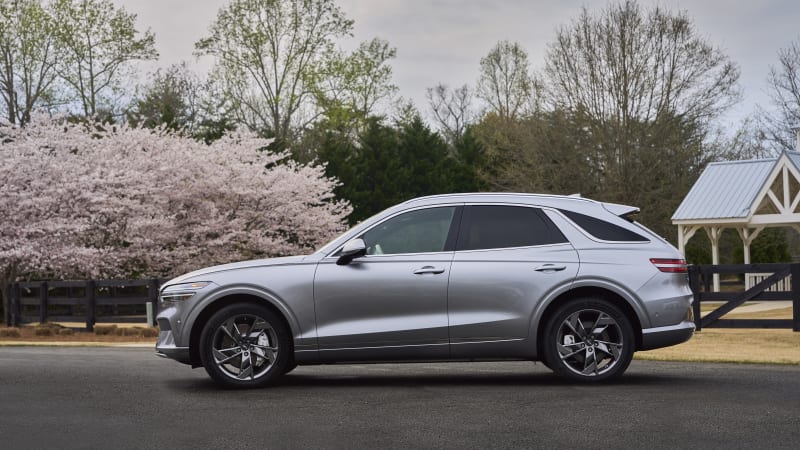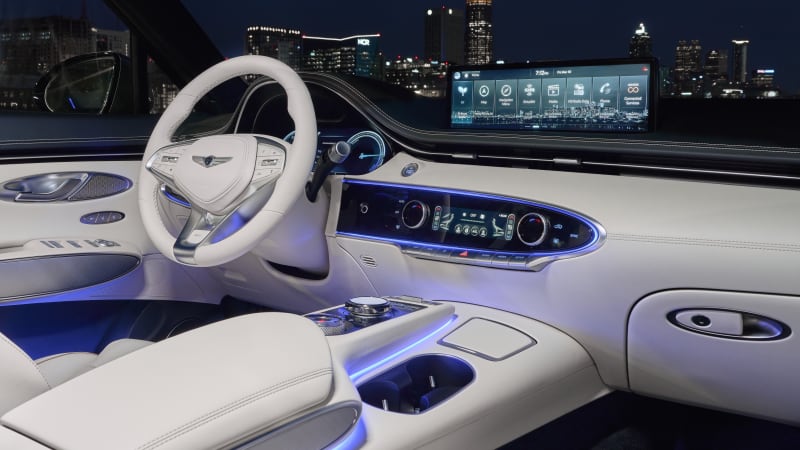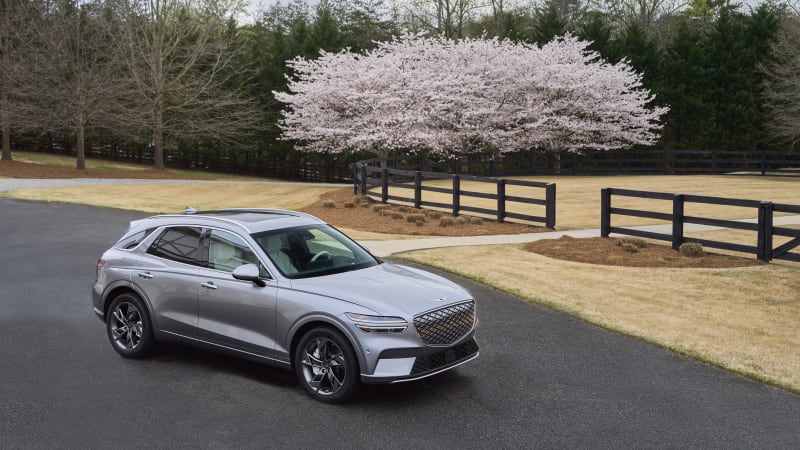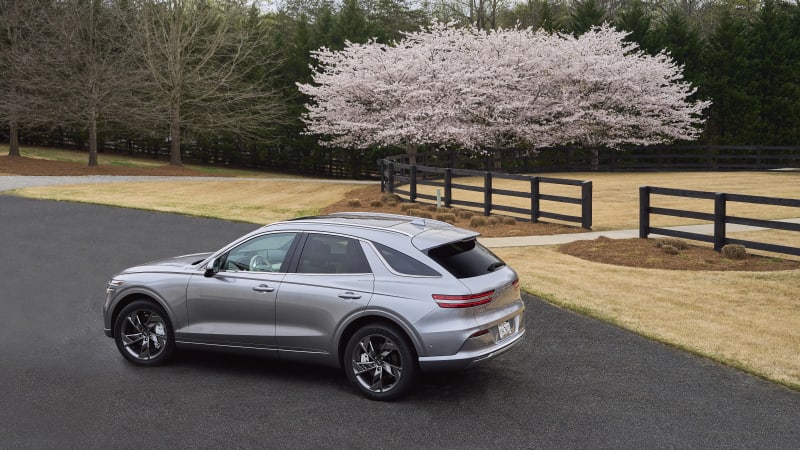[ad_1]
As Steely Dan famously sang, they call Alabama the Crimson Tide. Here in Montgomery, we’re knee-deep in a Green Tide that’s transforming the business of building and selling cars. The high-style Genesis Electrified GV70 emerging from Hyundai Motor Manufacturing Alabama (HMMA) is the first Genesis built outside South Korea. It’s only the second made-in-America EV from a foreign-based automaker, after the Volkswagen ID.4 whose Tennessee production kicked off in July.
Get ready for many more. Spurred by the Inflation Reduction Act — whose final interpretations and outcomes remain in Washingtonian flux — automakers foreign and domestic are scrambling to onshore EV-and-battery production to boost American jobs and security, as a condition to securing lucrative tax incentives for manufacturers and consumers. Beginning in 2024, qualifying for EV credits may even require sourcing a hefty percentage of minerals and other battery materials from America or approved trade partners, a list that conspicuously does not include China or Russia. As things stand, that sticking point could make a vast number of 2024 EVs ineligible for purchase credits; though leasing a vehicle may still earn dealers a $7,500 commercial credit that they could pass along to consumers, as most currently do for EV lessees.
The electric version of Genesis’ most-popular SUV is the avatar of Hyundai Motor’s $10 billion American EV investment, which is expected to foster up to 8,000 good-paying jobs. Even that’s a fraction of what Atlas Public Policy estimates to be $128 billion in industry-wide investment in America’s EV, battery and recycling capacity through 2030 alone. Hyundai’s planned onshore footprint includes a new battery factory northwest of Atlanta, and a $5.5 billion EV factory near Savannah that aims to produce Hyundai, Kia and Genesis EVs beginning in 2025. Beginning that year, Genesis says every new model introduced will be an EV, with no fossil-fuel option. And Genesis plans to phase out gasoline-powered models entirely by 2030, a similar timeline to luxury brands including Volvo and Cadillac.

In Alabama, where Hyundai also builds the Elantra, Sonata, Santa Fe and Santa Cruz, an Electrified GV70 is hoisted onto a lift for the final stop on its 16-hour assembly journey. As politicians, stakeholders and some of the factory’s 3,800 proud “team members” look on, an Automated Guided Vehicle on magnetic tracks boosts a pre-assembled, 77.4 kWh battery pack – for now, imported from South Korea — into its raised undercarriage. Workers quickly secure the pre-charged battery’s 26 bolts, then plastic underbody shields, followed by a coolant fill, a computerized battery-health check, and finally a run around HMMA’s 2.3-mile test track to check for rattles or drivability issues. For the priciest model (by far) ever produced at HMMA, this workstation is the only standalone stop for the Genesis, because the battery marriage takes longer than the roughly 52-to-57-second time allotment at every other station. Elsewhere on the assembly line, workers install the Genesis’ dual electric motors — with 160 kilowatts each, for a total 429 all-wheel-drive horsepower — in nearly the identical time it takes more-plebian Hyundais to receive an ICE powertrain.
Driving the Electrified GV70 offers more reasons to watch the clock: A “Boost” button, prominently displayed on the Genesis’ striking, pillowy steering wheel, kicks output to a hefty 483 horsepower for 10-second bursts, with max torque unchanged at 516 pound-feet, or 56 more than a Corvette Z06. More time is saved at a standstill, with an 800-volt architecture that allows charging at up to 350 kilowatts. Like the smaller GV60, Hyundai Ioniq5 and Kia EV6, the GV70 can refill its battery from 10-to-80 percent in as little as 18 minutes.
A good thing, because owners get their first 30 minutes of fast charging for free at Electrify America stations, over three years.
The Genesis’ artistically rendered body doesn’t signal its electric status, aside from eliminating telltale exhaust outlets. The electric version blocks off its corporate “Crest” grille, with active air shutters in the lower bumper to cool the battery when needed. A front-mounted charge outlet, accessed by pushing the letter “G” on a hinged panel, is a smart location, especially for navigating awkwardly located public chargers or their notoriously short cords. Standard 20-inch alloy wheels get an exclusive pattern.

The electric version’s interior also hews closely to the gasoline model’s, and why wouldn’t it? Inside and out, the GV70 underlines how the Genesis brand has usurped an often-complacent Audi especially — once a similar luxury underdog and overachiever — as a consensus leader in appealing, cut-above luxury design. Like its mainstream Hyundai and Kia cousins, Genesis just seems a little hungrier than the competition, as these brands’ sales and award-hogging ways make clear.
Underfloor storage neatly houses the cargo roller shade (a feature more SUVs should adopt), a charge cable, and a vehicle-to-load (V2L) adapter to charge gear or devices. A small frunk makes room for a tire-inflator kit and not much else. Versus the ICE version that shares its platform, the EV loses less than 0.5 cubic feet of cargo space behind the second row. An outstanding 28.7 cubic feet remains on par with a spacious BMW X3. But rear legroom remains a bit tight, as with so many small luxury SUVs.
Unlike Tesla, Ford or many other EVs, Genesis for now keeps things simple by offering a single AWD powertrain — in “Advanced” or “Prestige” trims — with no choice in battery or wheel size and no front-wheel-drive or basic-equipment version. That limits choice but does make shopping easier, since every Electrified GV70 delivers identical horsepower, driving range and capability.


For shoppers, that also makes for easier comparisons with fossil-fueled GV70’s, a choice that will be easy for some and difficult for others. One the ICE side, a 2023 GV70 2.5T can be had from $44,275, but that four-cylinder base model isn’t an apples-to-apples comparison. From performance to standard features, the real ICE analogs are the 375-horsepower 3.5T Sport Advanced from $61,045, and a 3.5T Sport Prestige at $65,995. By those lights, the Electrified GV70 Advanced represents a roughly $5,900 premium over its similarly equipped V6 gasoline counterpart. And the electric GV70 Prestige costs about $7,800 more than a top-of-the-line GV70 Prestige V6. As ever, federal (and state or local) tax breaks can put a heavy thumb on the scale: Secure that $7,500 tax credit, and suddenly the Electrified GV70 Advanced costs $1,600 less than its comparable gasoline version, while the plug-in Prestige costs just $300 more.
Now, throw in stronger-and-silent performance and dramatically reduced energy bills: We estimate about $2,100 in annual fuel savings to drive the Electrified GV70 over 15,000 miles; at roughly $900 to juice up versus $3,000 for the twin-turbo V6 that’s EPA rated at 19/24 mpg. Over five years, that’s another $10,500 in a buyer’s pocket. That’s not even counting potential savings from essentially free public charging or reduced maintenance costs. Add it up, and this whole America-backed, America-made, job-boosting EV deal is looking pretty sweet. At least until the Inflation Act demands batteries be sourced from America or strategically friendly nations as well. But that’s a story for another time.
Related video:
[ad_2]
Source link
